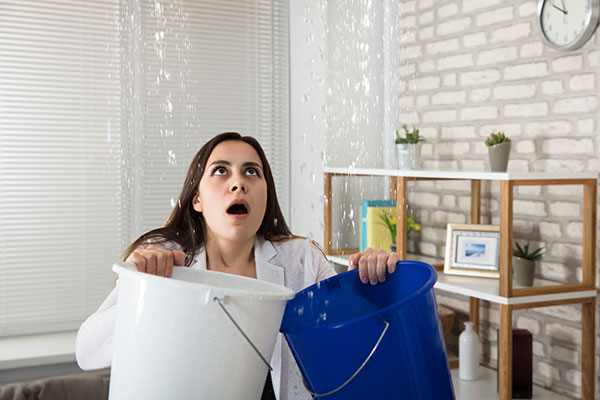Most buildings are designed to keep water out; however, the older they get, the more attention buildings need in terms of leak prevention. Leaks can be more than annoying; they can also be a major source of building damage that hides above ceilings and behind walls. Thankfully, preventing building leaks isn’t rocket science. It simply requires regularly checking for sources of leaks to ensure that they aren’t exposing condominium buildings to water damage. Here are a few common sources of building leaks.
Roof Ponding
Roof ponding occurs when the angle of a roof is interrupted by a sloped place that allows water to pond. Roof ponding itself is not water leakage. However, if water pools in one place season after season, fluctuating temperatures can eventually break the roof seal and let the water inside. Roof ponding is commonly seen on flat tar roofs whose angle is nearly imperceptible.
Roof Installations
Roof installations that are screwed directly to a roof, such as TV antennas and billboards, predispose a roof to leak at the very points at which the installation is screwed in place. That a roof installation could cause leaks is often an afterthought to its implementation. Most providers of condo association management recommend removing rooftop installations to stop leaks.
Widening Screw Holes
Metal roof sheets are held in place by industrial-grade screws that are sealed tight to the exterior layer of the roofing. Over time, however, fluctuating temperatures that cause the metal to expand and contract can cause the screw holes to grow wider, allowing water to saturate the roof decking and eventually create unsightly leaks on the inner layer of the ceiling of a building.
Missing Shingles
Asphalt shingles are designed to last between 10 and 15 years. During the later part of their lifespan, the roof may shed shingles. The first signs of damage are often apparent after a storm. If left alone, the damage makes it easy for water to leak into the roof. A condominium association management provider can coordinate with a vendor to fix the problem.
Fix Your Leaks Today
If your condominium community has problems with water leaking into common buildings, it may be due to roof ponding, widening screw holes in metal roof sheets, missing shingles, or roof installations that inadvertently puncture the roof seal. If your community’s maintenance crew isn’t experienced in fixing roof leaks, contacting a provider of condominium association management is an excellent option. The provider can coordinate with a roofing vendor to fix persistent leaks.





